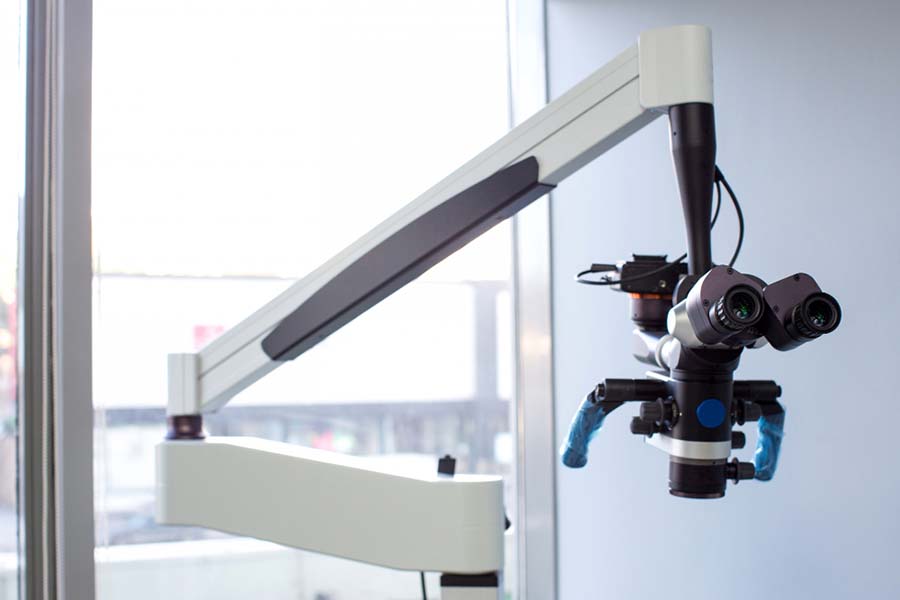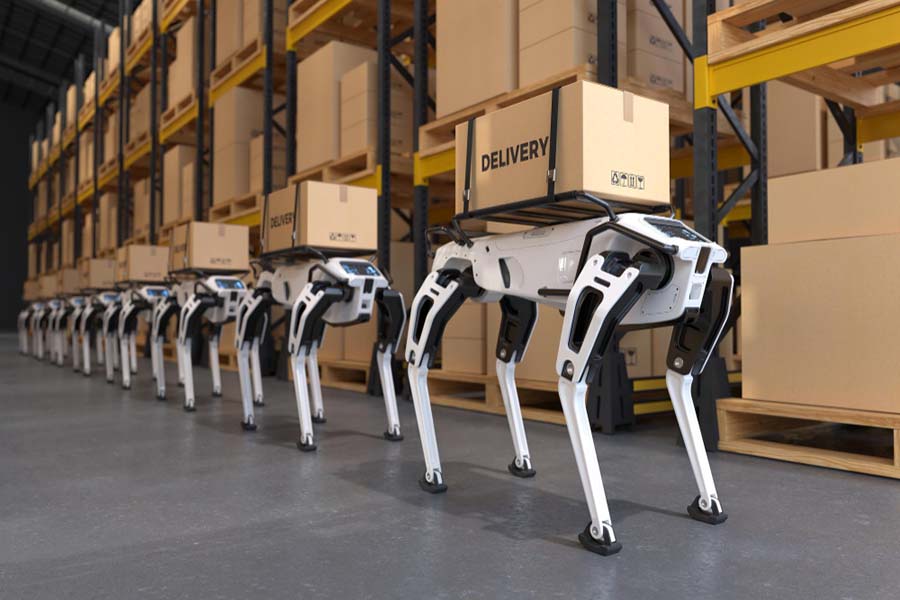Robotic Healthcare: Transforming Patient Care

In recent years, the healthcare field has witnessed a remarkable transformation with the integration of robotics. This cutting-edge technology has the potential to revolutionise patient care by enhancing the accuracy, efficiency, and safety of various medical procedures. From surgical robots to robotic exoskeletons, the advancements in robotics have opened up new possibilities in delivering healthcare services. This blog will delve into the various applications and benefits of robotics in healthcare.
Advancements in Robotic Surgery
One of the most significant applications of robotics in healthcare is in the field of surgery. Robotic surgical systems, such as the da Vinci Surgical System, have gained immense popularity due to their precise and minimally invasive nature. These systems consist of robotic arms controlled by surgeons, providing enhanced dexterity and precision during procedures.
Benefits of Robotic Surgery
Increased Precision: Robotic arms offer exceptional maneuverability, allowing surgeons to perform intricate procedures with enhanced precision. This reduces damage to surrounding tissues, minimises scarring, and improves patient outcomes. For example, robotics can significantly improve accuracy in delicate procedures like neurosurgery or microsurgery, where even the slightest error can have significant consequences.
Minimally Invasive: Robotic surgery enables surgeons to make smaller incisions than traditional open surgeries. This reduces pain, faster recovery times, and fewer post-operative complications. The smaller incisions also result in less blood loss, lower risk of infection, and reduced hospital stays. Patients can experience a quicker return to their daily activities.
Remote Surgery: With the advancements in telemedicine, robotic surgery can be performed remotely, enabling access to specialised surgical expertise in areas with limited resources. This has the potential to improve healthcare outcomes in underserved regions. Remote surgery allows experienced surgeons to provide their expertise to patients far away. It eliminates geographical barriers and ensures patients receive the best care regardless of location.
Robotic-assisted Rehabilitation
Besides surgical applications, robotics has also made significant contributions to rehabilitation. Robotic exoskeletons and prosthetics assist patients with mobility impairments, neurological disorders, and injuries in regaining their independence and functionality.
Benefits of Robotic-assisted Rehabilitation
Enhanced Rehabilitation: Robotic exoskeletons provide support and assistance to patients during physical therapy, promoting faster recovery and improved mobility. These devices can precisely track patients’ movements, adjusting assistance levels according to their needs. By offering targeted assistance, robots can facilitate relearning motor skills and help patients regain their strength and mobility more effectively.
Personalised Treatment: Robotics enable therapists to customise rehabilitation programs based on individual patients’ requirements. Robotic systems can provide targeted and efficient rehabilitation interventions by monitoring progress and adjusting therapy parameters. The ability to tailor treatment plans to each patient’s needs can lead to better outcomes and improved patient satisfaction.
Improved Quality of Life: Robotic prosthetics restore limb functionality, allowing individuals with limb loss to engage in daily activities and regain independence. These robotics advancements have transformed amputees’ lives, enabling them to lead more fulfilling lives. Robotics has significantly improved the quality of life for individuals with limb loss by providing natural and intuitive control over prosthetic limbs. It allows them to perform tasks that were once difficult or impossible, enhancing their independence and well-being.
Robotics in Disease Diagnosis and Monitoring
In addition to surgery and rehabilitation, robotics is vital in disease diagnosis and monitoring. Robotic technologies are being utilised in various medical imaging procedures, such as magnetic resonance imaging (MRI) and computed tomography (CT) scans, to improve accuracy and efficiency.
Benefits of Robotics in Disease Diagnosis and Monitoring
Accurate Imaging: Robotic systems can precisely position patients during imaging procedures, ensuring optimal image quality and accuracy. This aids healthcare professionals in making accurate diagnoses and devising appropriate treatment plans. Robots can consistently produce high-quality images by eliminating the possibility of human error in positioning, allowing for more accurate and reliable diagnoses.
Efficient Scanning: Robotics streamline imaging processes, reducing scan times and improving patient throughput. This is particularly beneficial in busy healthcare settings, where timely diagnosis is crucial. With shorter scan times, patients can spend less time in the imaging department, reducing wait times and improving overall efficiency in healthcare delivery.
Reduced Radiation Exposure: Robotic systems can minimise radiation exposure during imaging procedures by optimising scan parameters and reducing repeat scans. This contributes to patient safety and mitigates potential risks associated with radiation. By precisely controlling the dosage and timing of radiation, robots can ensure that patients receive the minimum required exposure for accurate diagnosis while minimising potential harm.
Future Perspectives and Challenges
While robotics has undoubtedly revolutionised patient care, there are still challenges and opportunities for further advancements. Some future perspectives include:
Artificial Intelligence Integration: Integrating artificial intelligence algorithms with robotics could enhance decision-making capabilities and automate repetitive tasks, improving efficiency and outcomes. By leveraging AI, robots can analyse vast amounts of data, identify patterns, and make informed decisions, allowing for more precise and personalised treatments.
Robotic-Assisted Telemedicine: Integrating robotics can further improve remote healthcare delivery as telemedicine grows. Robotic systems can assist healthcare professionals during remote consultations, enabling more accurate assessments. With the assistance of robots, healthcare providers can remotely examine patients, gather vital signs, and perform physical examinations, providing a higher level of care to individuals who may need more accessible access to medical facilities.
Ethical Considerations: As robotics becomes more prevalent in healthcare, ethical considerations regarding patient privacy, consent, and the role of human healthcare professionals need to be carefully addressed. Clear guidelines and regulations must be established to ensure the responsible and ethical use of robotics in healthcare, protecting patient rights and maintaining trust in the healthcare system.
Conclusion
Robotics is revolutionising patient care in the field of healthcare. From surgical procedures to rehabilitation and disease diagnosis, robotics has the potential to enhance precision, efficiency, and outcomes. As technology advances, integrating robotics with other emerging technologies holds immense promise for the future of healthcare. By embracing this transformative technology, healthcare professionals can provide enhanced patient care, ultimately improving the overall quality of healthcare services.
Check out our other related posts if you enjoyed this one.
- The Rise of Collaborative Robots: Transforming Industries
- Unmasking Cyber Secrets: The Art of Deception Revealed!
- Decoding Cyber Threats: The Social Engineering Menace
- Unlock the Ultimate Quest: Ready Player One’s Audio Adventure!
- Revolutionising Wellness: Metaverse Therapy Unleashes Mental Liberation!
- Code Mastery Unleashed: Transform Your Skills with Clean Code by Robert C. Martin! 🚀
- Top Must-Have Tech Gadgets for Kids – Unbelievable Fun!
- Mastering Crypto Trading: Proven Strategies
- Unveiling Ethereum 2.0: Advancements & Impact
- AI Transforms E-Commerce: A Digital Revolution
Sign up for updates on this blog and our latest blog post if you enjoyed reading this one.
Share our blog content with your friends and colleagues via Facebook, Twitter, Pinterest, LinkedIn, email or WhatsApp links below and help them stay informed about the latest insights on business, marketing, finance, lifestyle, and society. Let’s build a knowledge-sharing community and empower each other to achieve our goals.
FAQ
What are some applications of robotics in healthcare? Healthcare robotics is used in surgical procedures, rehabilitation, and disease diagnosis and monitoring.
What are the benefits of robotic surgery?
Robotic surgery offers increased precision, minimally invasive procedures, and the ability to perform remote surgeries.
How does robotic-assisted rehabilitation benefit patients?
Robotic-assisted rehabilitation enhances rehabilitation by providing support and assistance to patients, allowing for personalised treatment, and improving the quality of life for individuals with limb loss.
How does robotics improve disease diagnosis and monitoring?
Robotics in disease diagnosis and monitoring ensures accurate imaging, efficient scanning processes, and reduced radiation exposure for patients.
Credits
Featured image by KamranAydinov on Freepik.







